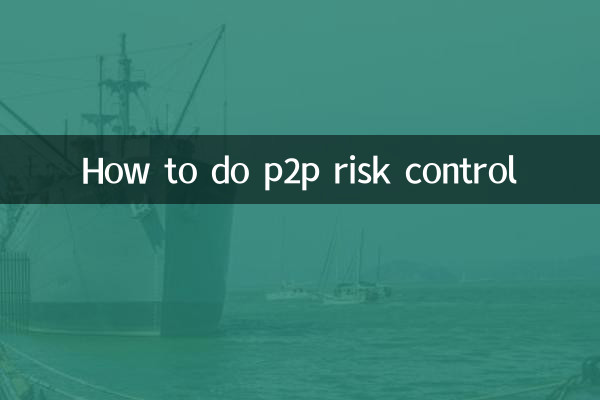How to do P2P risk control? Hot topics and structured solutions across the Internet in the past 10 days
With the rapid development of Internet finance, the risk control capabilities of P2P platforms have become the focus of the industry. In the past 10 days, the discussion around P2P risk control on the entire network has mainly focused onBig data model optimization, regulatory policy updates, user credit assessmentetc. direction. This article combines hot topics and analyzes the core methods of P2P risk control in the form of structured data.
1. Data on hot topics in P2P risk control in the past 10 days

| hot topics | Discuss the popularity index | Related keywords |
|---|---|---|
| Big data anti-fraud model | 9,200 | Machine learning, behavioral analysis |
| Regulatory Compliance Requirements | 8,500 | Filing system, information disclosure |
| Borrower credit score | 7,800 | Multi-dimensional data, credit reporting interface |
| Overdue rate control | 6,300 | Collection strategies, risk pricing |
2. Core steps and structured solutions for P2P risk control
1.Borrower initial screening: Filter high-risk groups through basic information (such as age, occupation), refer to the following model:
| Filter dimensions | safety threshold | risk weight |
|---|---|---|
| age | 22-55 years old | 15% |
| income stability | ≥6 months of continuous income | 25% |
| debt ratio | ≤70% | 30% |
2.Big data in-depth analysis: Integrate third-party data (such as e-commerce, social behavior) and create a dynamic scorecard:
| data source | Rating proportion | update frequency |
|---|---|---|
| Central bank credit report | 40% | real time |
| Carrier records | 20% | Monthly update |
| consumer behavior | 15% | Weekly update |
3.Post-loan monitoring system: Dynamically adjust the risk level through the following indicators:
| Monitoring indicators | Warning threshold | Countermeasures |
|---|---|---|
| Repayment delay rate | >5% | Trigger manual review |
| Number of logins on the same device | ≥3 accounts | Freeze associated accounts |
| IP address change frequency | Average daily >2 times | Strengthen authentication |
3. Risk control technology trends in 2023
According to recent industry reports, P2P platforms have generally adoptedAI real-time decision-making system, typical technical applications include:
Natural language processing (NLP) analyzes loan description authenticity
Graph database identifies associated fraud networks
Federated learning enables data collaboration without leaking privacy
4. Key points of regulatory compliance
The newly released "Online Lending Management Measures" require platforms to implement:
| Compliance items | Specific requirements | Deadline |
|---|---|---|
| Data encryption | Comply with national secret standards | 2023Q4 |
| risk reserve | ≥3% of the balance to be collected | 2024Q1 |
Through the above structured solutions, P2P platforms can systematically reduce default risks. In the future, risk control will rely more onCross-platform data collaborationandRegTechIt is recommended that practitioners continue to pay attention to dynamic algorithm optimization and compliance adaptation.

check the details

check the details